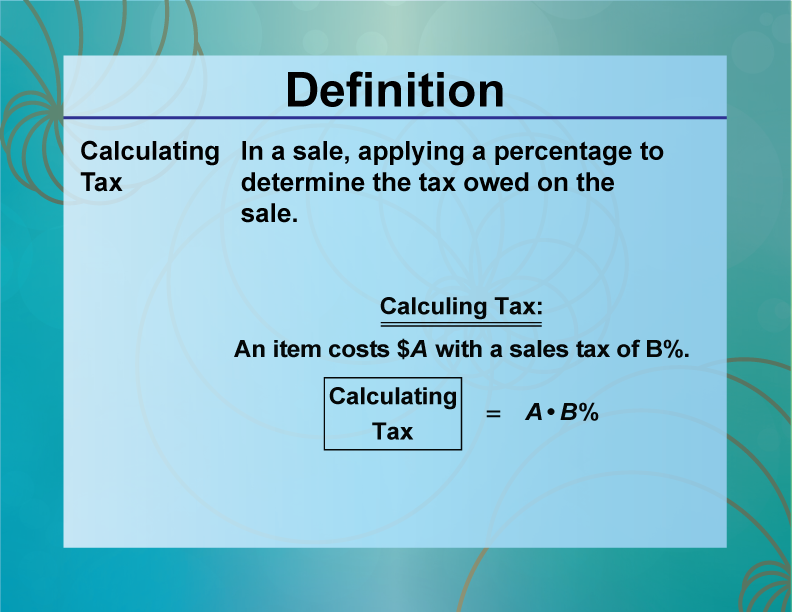
Display Title
Definition--Ratios, Proportions, and Percents Concepts--Calculating Tax
Display Title
Calculating Tax

Topic
Ratios, Proportions, and Percents
Definition
Calculating tax involves determining the percentage amount to be added to the base price of a product or service.
Description
Calculating tax is a fundamental application of percentages in real-world scenarios. When purchasing goods or services, the total cost is often the sum of the base price and the tax applied. Understanding how to calculate tax is essential for budgeting and financial literacy.
For example, if a product costs $50 and the tax rate is 8%, the tax amount is calculated as
50 × 0.08 = 4
Therefore, the total cost is
50 + 4 = 54
In math education, learning to calculate tax helps students understand the practical applications of percentages and develop skills in financial mathematics. This knowledge is crucial for everyday transactions and financial planning.
Teacher’s Script: "Let's say you buy a book for $30 and the sales tax rate is 5%. To find the total cost, first calculate the tax: 30 × 0.05 = 1.5. Add this to the original price: 30 + 1.5 = 31.5. So, the total cost is $31.50."

For a complete collection of terms related to Ratios, Proportions, and Percents click on this link: Ratios, Proportions, and Percents Collection.
| Common Core Standards | CCSS.MATH.CONTENT.6.RP.A.2, CCSS.MATH.CONTENT.6.RP.A.3, CCSS.MATH.CONTENT.7.RP.A.3, CCSS.MATH.CONTENT.HSG.SRT.A.1.B |
|---|---|
| Grade Range | 6 - 8 |
| Curriculum Nodes |
Algebra • Ratios, Proportions, and Percents • Applications of Ratios, Proportions, and Percents |
| Copyright Year | 2021 |
| Keywords | ratios, Percent, definitions, glossary terms, rates, proportions |